Can you name the Australian territory that’s about the same size as South Africa, twice as big as Texas, and five times the UK?
If you guessed Northern Territory then.. you’re right!
Australia’s third-largest federal subdivision covers roughly 142,000,000ha – about equal to France, Spain and Italy combined – and should the Northern Territory one day secede from the Federation, it would immediately occupy 19th spot on the list of the world’s biggest countries right between Mongolia and Peru. With all that land comes a diversity of landscapes. From the ochre dirt of the parched Red Centre, past the arid outback stretching thousands of kilometres on either side of the Stuart Highway, to the tropical Top End where monsoonal storms feed waterfalls, and across the sparkling blue to dreamy Arafura Sea islands.
There’s no doubt the Northern Territory has something for everyone, from UNESCO heritage-listed wonders and numerous national parks to a thriving town that’s rewriting the conventions on capital-city living. There’s an Indigenous history that spans 40,000 years, a pioneering legacy left by the first European settlers who arrived in the 1870s to thread the overland telegraph line from north to south, and a chilled 21st-century population famous for welcoming newcomers. The destination boasts rich flora and fauna with some species found nowhere else in the world, legendary landscapes beneath a vast dome of flawless sky that takes on a surreal shade of blue when set beside the rusty ochre rocks, adrenalin-pumping adventures, and places to kick back and do nothing more than be peaceful.
But where to start planning an adventure in a place famous for offering some of Australia’s most memorable cultural experiences? Here are 24 of the best things to do in the Northern Territory!
1. Savour the Uluṟu Sunset
Northern Territory sunsets are dependably dramatic, with the vast outback sky turning vibrant shades as the fiery sphere sinks towards the horizon, but nowhere is it more magnificent than Uluru. The show starts late in the afternoon, when hovering clouds turn the colour of lava to light the monolith up like neon, and continues through the dreamy hours of dusk as the sky descends through shades of pastel before eventually giving way to the navy blue of a star-lit night.
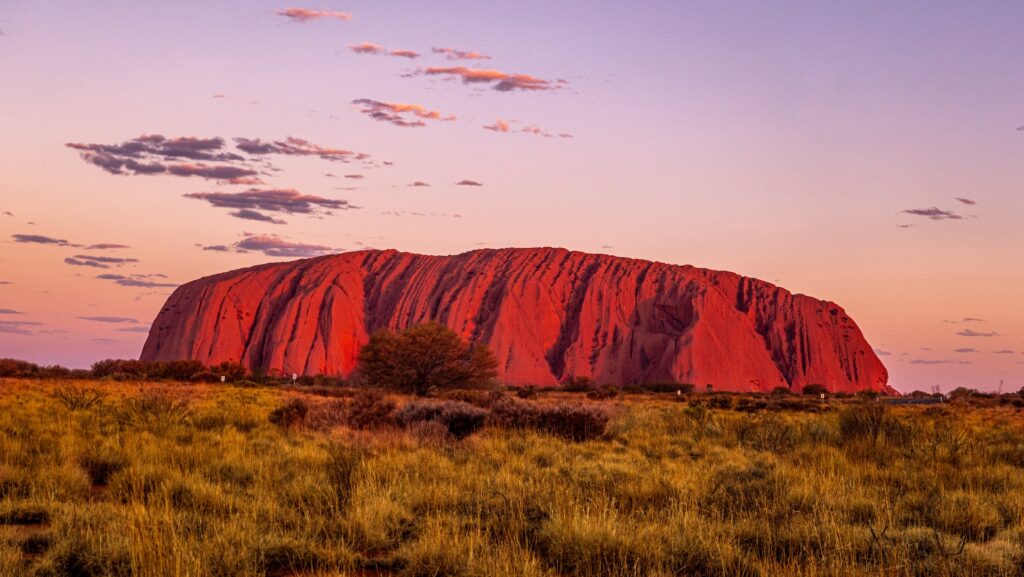
2. Float beneath a waterfall
Floating in the freshwater bowl at the base of a tumbling or trickling waterfall is a unique experience reserved for those drifting through Australia’s northern latitudes, with spectacular spots to swim dotted through the landscape surrounding the Northern Territory capital. Pack a picnic lunch and follow in the tyre tracks of locals to complete the dawdling 90-minute drive from Darwin/Gulumerrdgen to Litchfield National Park and cool down in the crystal-clear water beneath Florence Falls. Venture further into the sanctuary and soak in the deep plunge pool surrounded by jungle green at the base of Wangi Falls, pack the walking shoes to traverse the trail leading to the Cascades, or paddle in Buley Rockhole’s persuasive ponds.
3. Water-wise in Kakadu
The Top End swimming isn’t limited to Litchfield, with Kakadu National Park enticing to those with an appetite for paddling. Visitors set on swimming or soaking can select from a deep pond at the base of a waterfall or the rock holes crowning escarpment cliffs. Motor Car Falls is a hidden gem that’s a favourite during wet season when the more dramatic drops are inaccessible, and Jim Jim Falls is a Kakadu icon reserved for dry-season swimming. Magnuk Gorge – the picture-perfect plunge pool an hour’s drive from Cooinda, also known as Barramundi Gorge – is another of the destination’s safe swimming spaces, with modest dry-season cascades trickling down the narrow ravine’s steep rocky sides.
4. Explore the magnificent Macs
The East and West MacDonnell Ranges/Tjoritja stretch away from Alice Springs/Mparntwe like two long tentacles reaching across the ruddy dirt, with the rocky ridgelines that cast long shadows over the desert floor early and late in the day hiding pretty-as-a-picture landscapes and legendary landmarks. Wind through the West Macs to spy black-footed rock wallabies at Simpsons Gap/Rungutjirpa, watch the walls of Standley Chasm/Angkerle Atwatye glow at noon when the midday sun fills the narrow rock gorge, or swim in the refreshing freshwater ponds at Ellery Creek/Udepata or Ormiston Gorge/Kwartatuma. Pack a picnic when heading east and enjoy a snack at Jessie Gap after gazing at the Emily Gap rock art or wandering the circular Corroboree Rock walking route.
5. Cruise through Kakadu’s heart
Rise long before the sun wakes to see Kakadu National Park’s Yellow Water/Ngurrungurrudjba at its most beautiful. A dawn cruise around the peaceful wetlands – part of the South Alligator River floodplain – reveals a menagerie of native wildlife, from the wild buffalo that roam the grassy plains beside the billabong to the menacing saltwater crocodiles that lounge on the muddy banks. It is a twitchers haven, with 30 bird species found at the wetlands, and an early-morning cruise will pass dainty waterbirds dancing across floating leaves and birds of prey standing sentry in the skeletal branches of a bleached waterside gum.
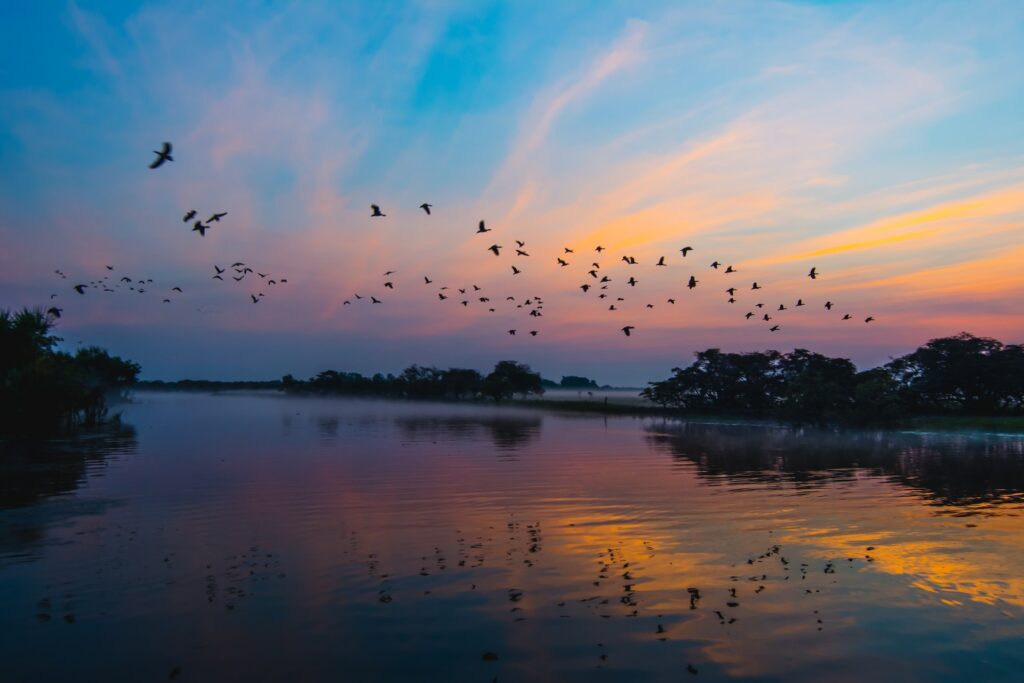
6. Fabulous feasting at Mindil Beach
When wet season subsides, and the dry settles on the Top End, the famous Mindil Beach Sunset Markets return to bring the world’s culinary creations to this beachside patch of Darwin parkland. More than 200 stalls – including 60 stands cooking cuisine brought to the multicultural capital by migrants arriving from all points of the compass across the decades – set up every Thursday and Sunday night between April and October. Buskers perform along the pathways with the music drifting across the crowd, local artists sell colourful creations, and cooks create dishes that come together to become Darwin’s delicious version of a degustation dinner.
7. Appreciate art in the outdoors
Australia is famous for its alfresco First Nation galleries that feature thousands of years of Indigenous art. There are more than 100,000 significant rock-art sites around the country, with 5,000 of these precious places sitting inside the expansive boundary of Kakadu National Park. The outdoor galleries at Ubirr, Burrungkuy and Nanguluwurr protect centuries-old paintings that are now treasured for documenting the ancestry of the Bininj and Mungguy people.
8. Go where the rocks glow
Nitmiluk National Park features high up on every list of Northern Territory treasures, with this protected plot on the land of the Jawoyn people sitting to the south of Kakadu National Park close to Katherine. A quiet cruise through Nitmiluk Gorge at any hour between dawn and dusk lets travellers understand the changing moods of the towering sandstone sides. The movement of the sun and clouds cast different shades and shadows across the sheer slopes that rise from the Katherine River’s still mirror-like surface as it drifts through the 13 impressive gorges. Those with more time can complete the journey to Edith Falls/Leliyn near the park’s northern boundary and swim in a natural pool surrounded by paperbarks and pandanus plants.
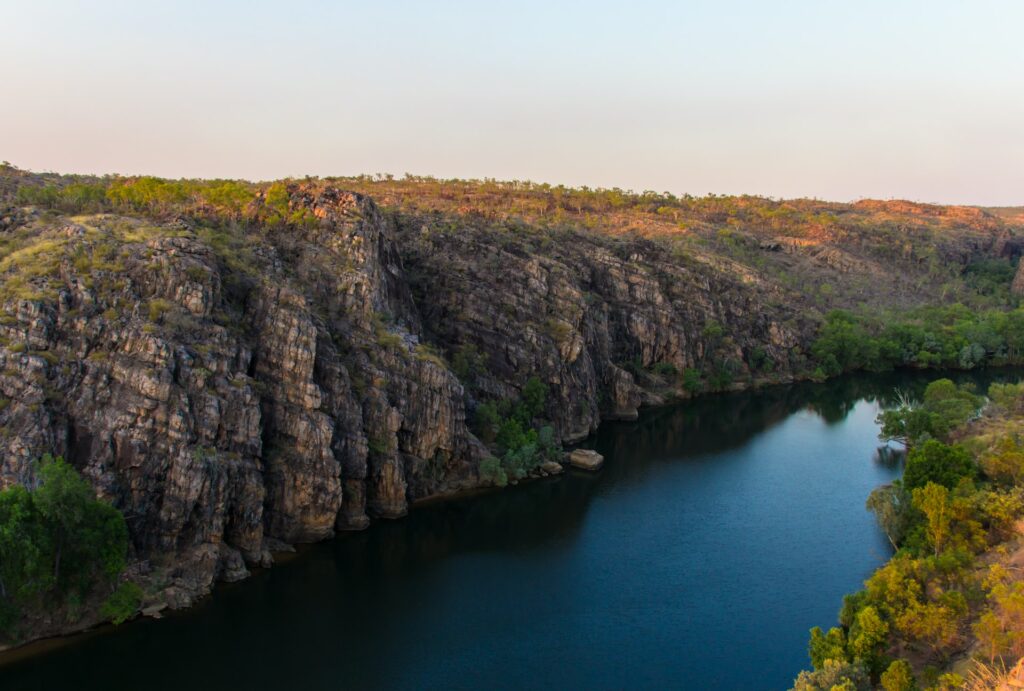
9. Wander between Kata Tjuta’s domes
Kata Tjuta – or The Olgas, as the Red Centre landmark was christened in 1872 by explorer Ernest Giles during one of his expeditions through Australia’s arid inland – is the windblown cluster of 36 domes that rise from the desert floor a 20-minute drive from Uluru. The magical location is the perfect place for serene strolling, with tracks and trails winding around the stately structures, and travellers joining an Indigenous guide will discover how this region’s “many heads” landmark feature in the Tjukurpa of the local Anangu traditional owners.
10. Sunets, storms and seafood
Do as the locals do in Darwin, and wander onto Stokes Hill Wharf late in the afternoon to occupy an alfresco table at this outdoor dining destination and feast on the freshest local seafood while watching daytime descend through the stages of dusk to darkness. Linger during wet season and marvel at the monsoonal storms brewing on the horizon around dinnertime, or take a sunset sail on Darwin Harbour during the dry and end the cruise with an after-dark drink or indulgent dessert under the stars.
11. Become the King (or Queen) of the canyon
Those making the three-hour drive from Uluru to Watarrka National Park should pack their most sturdy walking shoes to explore Kings Canyon which is, without a doubt, the most spectacular corner of this Red Centre sanctuary. Complete the iconic Kings Canyon Rim Walk to ascend the steep sandstone cliffs to savour 360-degree views across the rust-coloured dunes and gaze down into valleys choked with lush palm trees, or enjoy the more leisurely amble into the Garden of Eden to become immersed in the spring-fed green.
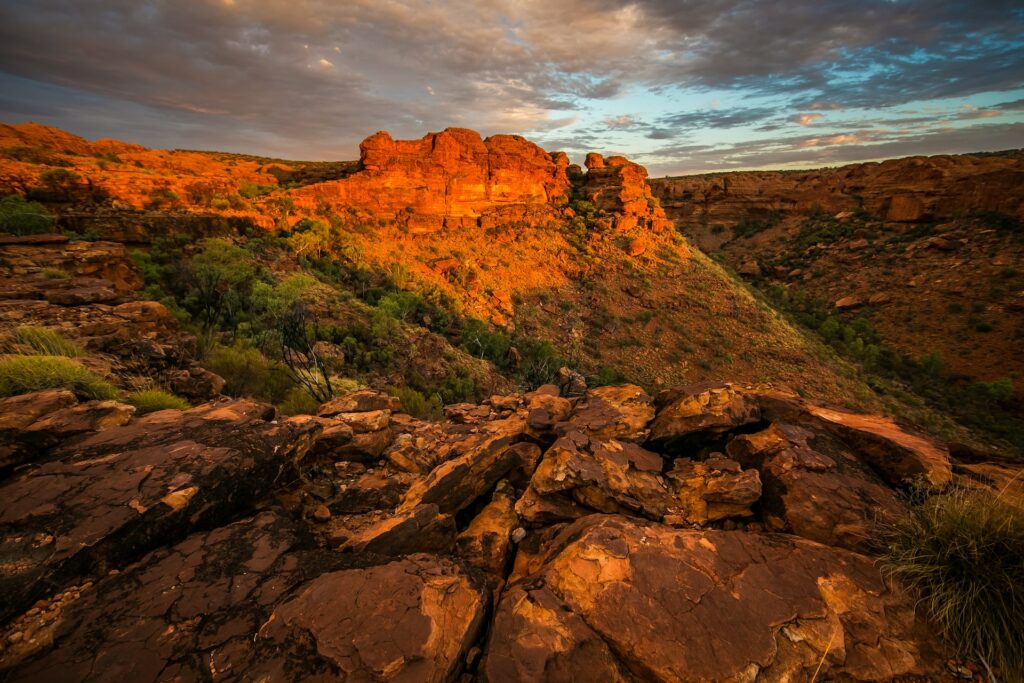
12. Be hypnotised by Tiwi Time
The Top End’s Tiwi Islands – the timeless Timor Sea plots aptly nicknamed the “Islands of Smiles” – lets travellers escape the tourist trail to uncover a land famed for its biodiversity and natural beauty. Bathurst/Nguyu and Melville/Yermalner are the two main islands, resting 80km across the water to the north of Darwin, with the predominantly Indigenous population residing in the quiet communities scattered along the captivating coastline. Travellers can visit on day-trip adventures from the capital and meet locals famous for artistic abilities and sporting skills, or time a trip to coincide with the annual art sale and Aussie Rules carnival scheduled into the destination’s calendar every March.
13. Take a tour of a town like Alice
Let a stop in Alice Springs become an educational experience by visiting the tourist attractions dotted around the Red Centre capital that are dedicated to telling the story of living in this most remote of regions. Visit the Royal Flying Doctor Service Alice Springs Museum to discover the organisation John Flynn founded before seeing how teachers at the Alice Springs School of the Air educate kids that can’t reach traditional classrooms. Step back in time to the days when the settlement was first established at the Alice Springs Telegraph Station Historical Reserve, ascend Anzac Hill to gaze across the address that’s now home to more than 25,000 people, and head out of town to the Kangaroo Sanctuary where Chris “Brolga” Barnes cares for orphaned joeys.
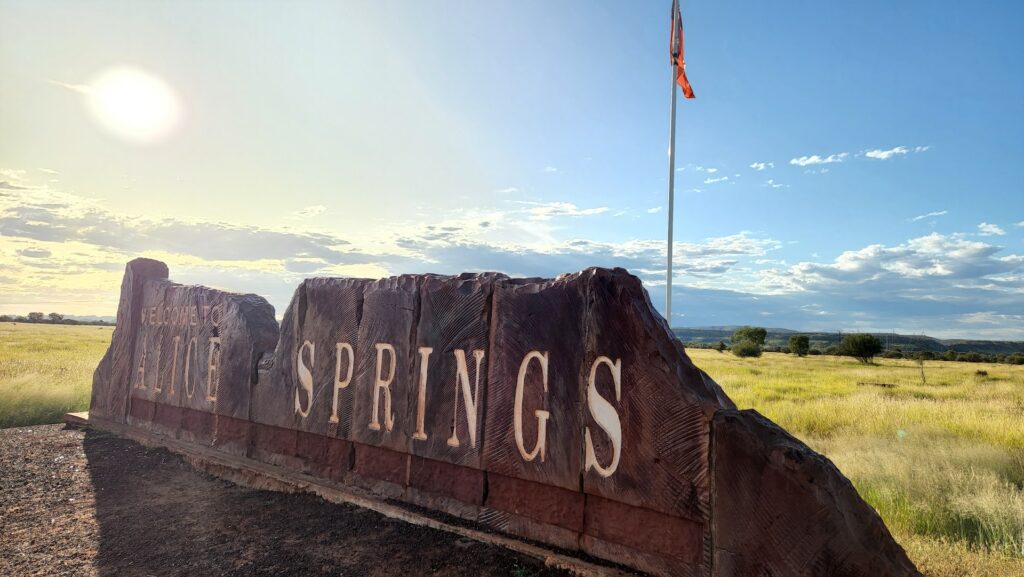
14. Be tempted by thermal springs
Mataranka, the Stuart Highway hamlet 420km south of Darwin, was popularised when it featured in Jeannie Gunn’s autobiographical novel We of the Never Never before becoming the backdrop for the 1982 production that took the story to the big screen. But the main attraction is now the string of crystal clear turquoise ponds that tempt travellers exploring the Northern Territory by road to pause inside Elsey National Park for a satisfying soak in the heated thermal water that hides beneath a canopy of perfect palms.
15. Marvel at mother nature’s marbles
A corner of the Barkly Tablelands, 95km from Tennant Creek, takes on a surreal sci-fi feel thanks to the rotund granite boulders that pepper the desert landscape of a secluded shallow valley. The Devil’s Marbles are the sacred site known as Karlu Karlu to the Warumungu people, this land’s traditional owners, and while the rocks formed millions of years ago they continue eroding and cracking to be one of Mother Nature’s works in progress. Footpaths are flanked by information boards that tell visitors a story of time, explaining how the boulders are shaped by wind and rain to be precariously perched as if defying gravity.
16. Taking to the centre’s top trail
Central Australia is home to one of this country’s most impressive multi-day hikes, with the 230km Larapinta Trail following the rocky spine of the West MacDonnell Ranges from the Alice Springs Telegraph Station to Mount Sonder/Rwetyepme. While experienced walkers can take a week to complete the course, those seeking to stroll can plan day hikes by accessing the many trailheads plotted along the 12 stand-alone sections of the track. Locals say the cooler months from April to August are the best for tramping, with the 9km segment from Ormiston Gorge to Finke River the shortest section taking four hours to complete and traverse territory marked by dry creek beds lined with stately red gums.
17. Finding festival fun under the winter sun
Darwin is fast becoming a renowned artistic hub to rival the cities in the country’s southern states. The Territory’s capital city comes alive during the dry season – when Australia’s southern states are coping with the winter chill – to host two of the country’s most memorable festivals. The 2023 Darwin Fringe Festival – considered the state’s “biggest platform for emerging artists” – is set to take place between July 14 and 23 this year, and the Darwin Festival will happen the following month between August 10 and 27. It’s a chance for visitors to “soak up relaxed vibes and balmy weather” with a long list of events and activities scheduled to make the most of the dependable mid-year sunshine and clear starry nights.
18. Escape to the land time forgot
Arnhem Land – the wild paradise bounded by Kakadu National Park, the Arafura Sea and the Gulf of Carpentaria – is considered Australia’s “last stronghold of traditional Aboriginal culture” and a destination few outsiders are fortunate enough to experience every year. Walk a rugged coastline that’s broken up by perfect plots of white sand, visit the community centres where locals work on traditional arts and crafts, cast a line and try to catch dinner, or sit with an elder to learn more about the traditional owner’s unbroken link to the land.
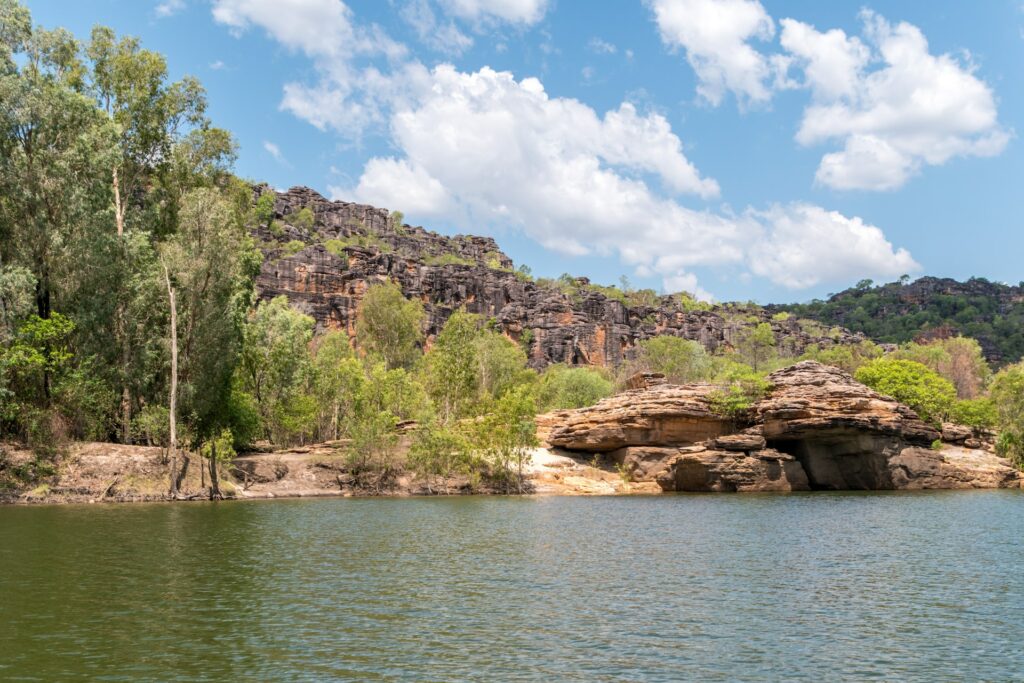
19. Remembering Tracy in the capital
On Christmas Eve in 1975 a menacing category-four cyclone scored a direct hit on the capital to take the lives of 71 people, level 80 per cent of the settlement, and add a significant chapter to the Territory’s history. Today Cyclone Tracy is remembered in a remarkable permanent exhibition at the Museum and Art Gallery Northern Territory, with the display dedicated to documenting the event featuring a sound booth that lets visitors hear the noise of the night as captured on the tape recorder of a local seeking shelter from the destruction.
20. Red Centre round
Golfers should pack the clubs when heading for the Red Centre and play a round at one of the planet’s premier desert courses. The Alice Springs Golf Club is an oasis in the outback, with one dramatic description noting it offers a “unique charm blended with some subtle severity”. The championship course rests against the rolling ridges of the West MacDonnell Ranges and boasts fairways flanked by scrubby vegetation and manicured greens that stand out beside the craggy rocks.
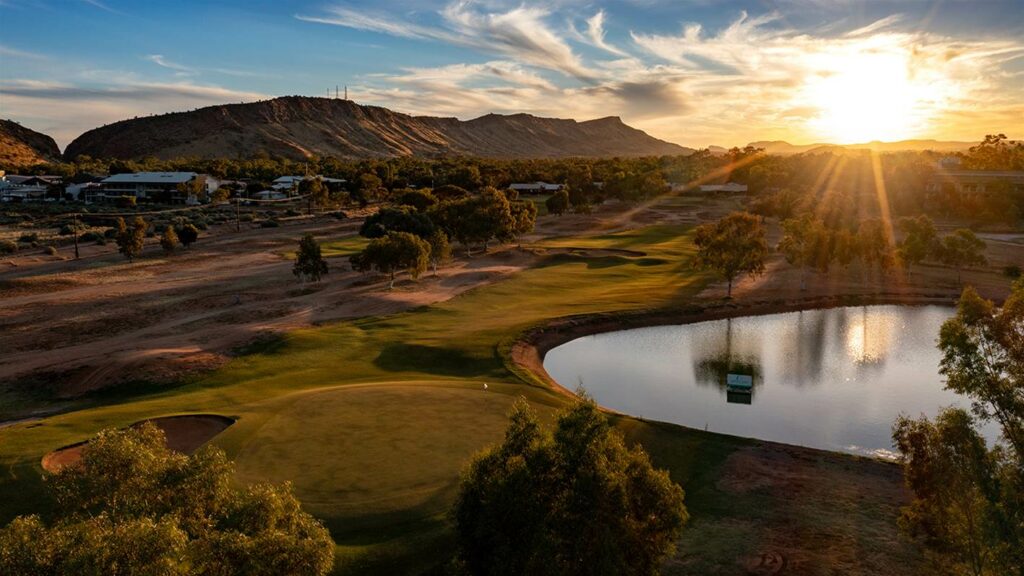
21. Walking around the rock
Travellers set on seeing more of Uluru can embark on a gentle lap around the landmark with the Uluru Base Walk a 9.4km wander that circumnavigates the structure. The saunter can be done solo, but those joining a guided hike with one of the Park’s Indigenous rangers will hear Tjukurpa stories handed down through the generations while seeing rock-art sites and learning about the area’s abundance of native flora and fauna.
22. Remembering a wartime address
At first glance, Adelaide River appears to be a sleepy settlement that straddles the Stuart Highway a stone’s throw from the capital. But this town tells a story of World War Two in the Top End, with signs of wartime activity still on show for travellers interested in Australia’s military history. Adelaide River was a dot on the map in 1939, it quietly grew to become a rest camp and Army agricultural area in the early days of the Second World War, and then rapidly expanded to become a major military hub after the first air raids occurred in February 1942. The settlement is home to the Adelaide River War Cemetery, with this peaceful property not only the final resting place for service people who died while on duty but also the civilians killed during the first devastating raid on Darwin.
23. All-season swimming in the capital
The Top End’s beaches are out of bounds but there’s a man-made lagoon complete with a net to protect swimmers from stingers at the buzzing Darwin Waterfront. For those seeking a little swell, the Wave Lagoon serves up 10 different wave patterns that start big for bobbing on a boogie board before relaxing into little more than ripples that lap against the artificial beach.
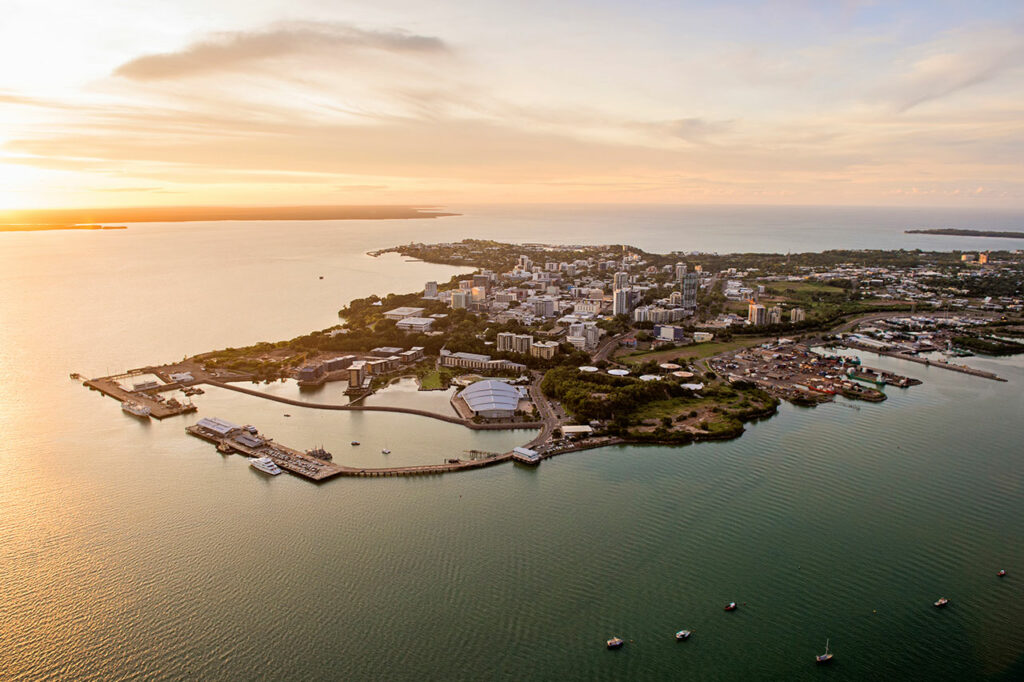
24. Drive the Davenport district
The Davenport Range – 200km from Tennant Creek on wild Alyawarr Country – qualifies as one of the Northern Territory’s hidden gems and a location that’s home to a menagerie of native animals from rock wallabies and emus to the waterbirds that dwell in the billabongs around the sprawling sanctuary. The Davenport Range National Park is best forged by four-wheel drive, with tracks winding around this isolated area of outback that’s bounded by some of northern Australia’s biggest cattle stations, with freshwater ponds like Old Police Station Waterhole and Whistleduck Creek both tempting sites to cool down with a tranquil swim.








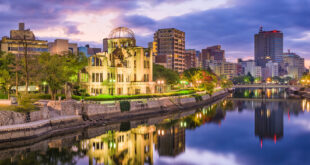
Join the Discussion
Type out your comment here:
You must be logged in to post a comment.